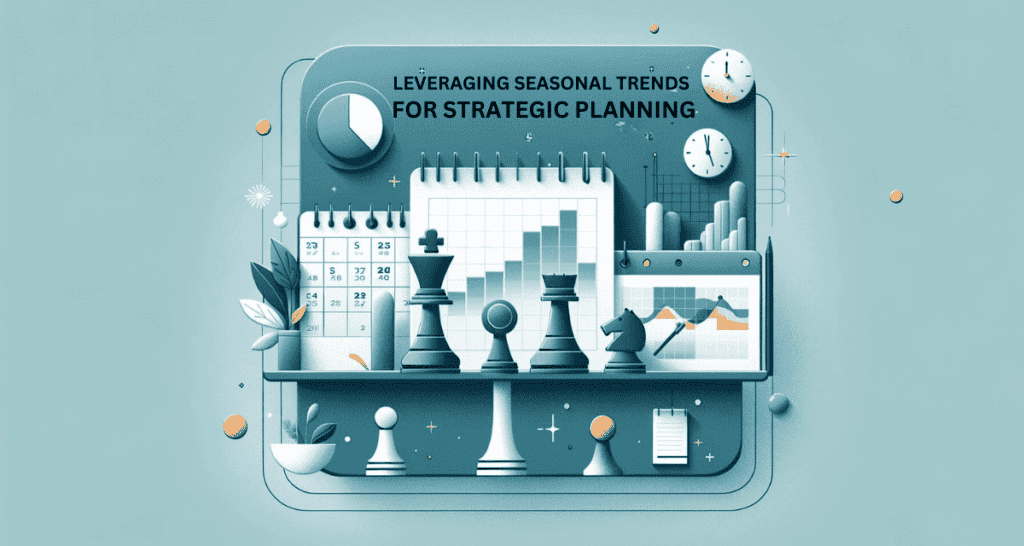Introduction
Welcome to the world of Google Trends, a fascinating tool that lets us peek into the collective curiosity of the world. Think of it as a giant, global brain, constantly searching for information, and Google Trends is the way to see what this brain is thinking about at any given time.
Why is this important, you might wonder? Well, for businesses and content creators in industries like retail, travel, or entertainment, knowing what people are searching for can be a goldmine. It helps in understanding what’s in demand, what’s trending, and more importantly, when these trends rise and fall with the seasons.
Identifying Seasonal Trends
Identifying seasonal trends with Google Trends is like being a detective. You’re looking for clues in the data that tell you when people’s interests change throughout the year. This can be incredibly valuable for planning your marketing, content, or product strategy. Let’s break down how you can do this, step by step.
Step 1: Choose the Right Keywords
First things first, you need to pick the right keywords. These are the words or phrases that people might use when they search for products or services related to your business. Think about what you offer and how people might search for it. For example, if you sell swimwear, keywords might include “swimsuits,” “bikinis,” or “swimming trunks.”
Step 2: Analyze the Data
Once you have your keywords, it’s time to dive into Google Trends. Enter your keyword into the search bar and press enter. You’ll see a graph that shows how search interest in your keyword has changed over time. Look for patterns. Do searches increase in the summer? Or maybe there’s a spike just before Christmas? These patterns can tell you a lot about when people are thinking about your products or services.
Step 3: Geographical Analysis
Interest in certain keywords can vary a lot from place to place. Google Trends lets you narrow down your data by region, which can be incredibly useful. Maybe “swimsuits” is a popular search term in California all year round, but in New York, searches spike just before summer. This kind of insight can help you create your marketing efforts to different regions.
Step 4: Practical Example
Now, let’s apply this with a real-world example. Suppose you run a business selling sunscreen. You choose “sunscreen” as your keyword and analyze the data on Google Trends. You notice that searches for “sunscreen” start to climb in May, peak in June and July, and then decline. This pattern tells you that people start thinking about buying sunscreen in late spring and early summer. With this knowledge, you can start your marketing campaigns in April, ensuring your products are top of mind when people are ready to buy.
Leveraging Seasonal Trends for Strategic Planning


Once you’ve identified seasonal trends using Google Trends, the next step is to leverage these insights for strategic planning. This can significantly impact your business, from content creation to product launches and advertising strategies. Let’s break down how to use these insights effectively.
Using Insights for Business Strategy
Content Creation
Creating content that resonates with your audience is important for engagement. By understanding seasonal trends, you can plan your content calendar to align with your audience’s interests at specific times of the year.
- Plan Ahead: Use the insights from Google Trends to plan your content topics months in advance. For instance, if you’re in the fitness industry and notice an increase in searches for “home workouts” in January (likely due to New Year’s resolutions), you can prepare relevant content in advance.
- Be Relevant: Modify your content to be as relevant as possible to the current season or upcoming events. This increases the likelihood of your content being shared and engaged with.
Product Launches
Timing is everything when it comes to launching new products. Google Trends can help you choose the best time to launch, ensuring your product meets the market when interest is peaking.
- Match Product Launches with Peak Interest: If you’re launching a new line of summer clothing, you want to ensure the launch aligns with when people start searching for summer wear. Google Trends can help you pinpoint that timing.
- Create Anticipation: Use the data to start teasing your product launch ahead of the peak interest period. This builds anticipation and can lead to a more successful launch.
Advertising Strategies
Your advertising spend should not be the same throughout the year. By adjusting your ad spend according to seasonal trends, you can maximize your advertising effectiveness.
- Adjust Ad Spend: Increase your advertising budget during peak interest periods to ensure your products or services are visible when people are searching for them.
- Target Geographically: Use geographical insights from Google Trends to target your ads more effectively. If certain regions show higher interest in your keywords, focus more of your advertising efforts there.
Success Story
To illustrate the power of leveraging seasonal trends, let’s look at a real-life example. Consider a company that sells holiday decorations. By analyzing Google Trends, they notice that searches for “Christmas decorations” start to rise in early November and peak in early December.
- Strategic Planning: Knowing this, the company begins its marketing campaign in late October, building anticipation.
- Product Availability: They ensure that their inventory is fully stocked by November to meet the expected demand.
- Advertising Push: The company increases its advertising spend in November, focusing on regions where the search interest is highest.
As a result, the company sees a significant increase in sales during the holiday season, thanks to aligning its strategy with the seasonal trends identified through Google Trends.
Predicting Future Trends


After mastering the identification and leveraging of current seasonal trends with Google Trends, the next progressive step is to predict future trends. This foresight can be a game-changer, allowing you to stay ahead of the curve and make informed decisions that capitalize on upcoming opportunities.
Understanding Historical Data
Analyze Past Trends
Start by looking at the data for your keywords over the past few years. Identify patterns and note any consistent peaks or troughs in search interest. These patterns can give you clues about when interest in certain topics or products might rise again.
- Look for Consistency: If you notice that searches for “summer dresses” spike every May without fail, you can predict a similar spike in the upcoming year.
- Note Anomalies: Sometimes, external factors (like a pandemic) can cause anomalies in the data. Be mindful of these and consider how they might affect future trends.
Use Data to Forecast
Once you’ve identified consistent patterns, you can start to make educated guesses about future trends. This doesn’t mean you’ll always be right, but it gives you a solid foundation for planning.
- Plan for Seasonal Peaks: If historical data shows that interest in your product peaks at certain times of the year, plan your inventory, marketing, and sales strategies around these peaks.
- Stay Flexible: Keep an eye on the data as it updates. If you see trends starting to shift, be ready to adjust your plans accordingly.
Tools and Techniques for Forecasting
While Google Trends is a powerful tool for understanding search interest over time, combining its insights with other tools and techniques can enhance your forecasting accuracy.
- Market Research: Use traditional market research methods to complement your findings from Google Trends. Surveys, focus groups, and sales data can provide additional insights.
- Competitor Analysis: Keep an eye on your competitors. If they’re making moves based on seasonal trends, it might indicate something worth paying attention to.
- Social Listening: Tools that monitor social media can help you catch emerging trends as they happen, giving you a jump on planning for the future.
Staying Ahead of the Curve
The ability to predict future trends gives you a significant advantage. It allows you to be proactive rather than reactive, setting your business or content strategy up for success.
- Innovate Based on Predictions: Use your predictions to try new things before anyone else does. This could be launching a product, creating content, or trying a new marketing tactic.
- Monitor and Adjust: Always keep an eye on how accurate your predictions are and be ready to adjust your strategy based on new data.
Challenges and Considerations


While Google Trends is an invaluable resource for identifying and leveraging seasonal trends, it’s important to approach this tool with a clear understanding of its limitations and to consider other factors that might influence your strategy. Let’s explore some of the challenges and considerations you should keep in mind.
Understanding the Limitations of Google Trends
Data Interpretation
Volume vs. Intent: Google Trends shows the volume of searches for a particular term, which doesn’t always equate to consumer intent or behavior. High search volume might indicate interest but not necessarily a willingness to purchase or engage.
Relative Data: The data provided by Google Trends is relative to the total search volume for the time and region selected. This means that understanding the absolute search volume or comparing different terms directly can be challenging without additional context.
Broad Trends vs. Niche Insights
General Trends: While Google Trends is excellent for identifying broad search trends, it might not be as effective for niche markets or specific queries with low search volume.
Seasonal Overlaps: Some trends might overlap seasonally, making it difficult to attribute interest to one factor over another without deeper analysis.
Complementing Google Trends with Other Research
To overcome some of these limitations and gain a more comprehensive understanding of your market, it’s crucial to complement Google Trends data with other forms of research.
Market Research Tools
Surveys and Polls: Direct feedback from your target audience can provide insights into their preferences and intentions, offering a layer of qualitative data that search trends alone cannot.
Sales Data: Analyzing your own sales data in conjunction with search trends can help you understand how online interest translates into actual purchasing behavior.
Cross-Referencing Data Sources
Social Media Analytics: Social media platforms offer their own set of analytics tools that can provide insights into what content is engaging your audience and when.
Competitor Analysis: Keeping an eye on your competitors’ strategies and performance can offer valuable context for the trends you observe in Google Trends.
Staying Agile
The digital landscape is ever-changing, as are consumer interests and behaviors. Here are a few tips to stay agile and responsive:
Regular Monitoring: Make Google Trends and other analytics tools a regular part of your strategy review process. Trends can shift quickly, and staying updated will help you adapt as needed.
Experimentation: Don’t be afraid to experiment based on the trends you identify. Testing new ideas can lead to valuable insights and innovations.
Feedback Loops: Create mechanisms to gather and analyze feedback from your audience regularly. This direct line of communication can help you adjust your strategies in real-time.
Conclusion
As we wrap up our exploration of analyzing seasonal trends with Google Trends, it’s clear that this tool offers a wealth of insights for marketers, business strategists, content creators, and anyone interested in tapping into the pulse of consumer interest. By understanding how to effectively use Google Trends to identify, leverage, and predict seasonal trends, you can make informed decisions that significantly impact your business or content strategy.
However, it’s also important to approach this tool with an understanding of its limitations and to complement it with other research methods for a well-rounded strategy.
Recap of Key Points
Google Trends is a powerful tool for identifying search interest over time, helping you uncover seasonal trends in various industries.
By analyzing search volume index, interest over time, geographical insights, and related topics and queries, you can gain valuable insights into consumer behavior.
Using these insights for strategic planning can enhance your content creation, product launches, and advertising strategies, aligning them with when and where interest peaks.
Predicting future trends using historical data from Google Trends, combined with other forecasting tools and techniques, allows you to stay ahead of the curve.
It’s vital to recognize the limitations of Google Trends, such as its focus on search volume rather than intent and the need for cross-referencing with other data sources for a comprehensive understanding.
- Analyzing Seasonal Trends with Google Trends - March 10, 2024
- Best Keyword Research Techniques with Chat GPT 4 - February 26, 2024
- Unveiling the Ultimate Keyword Mapping Blueprint for Niche Relevance in 2024 - January 4, 2024

